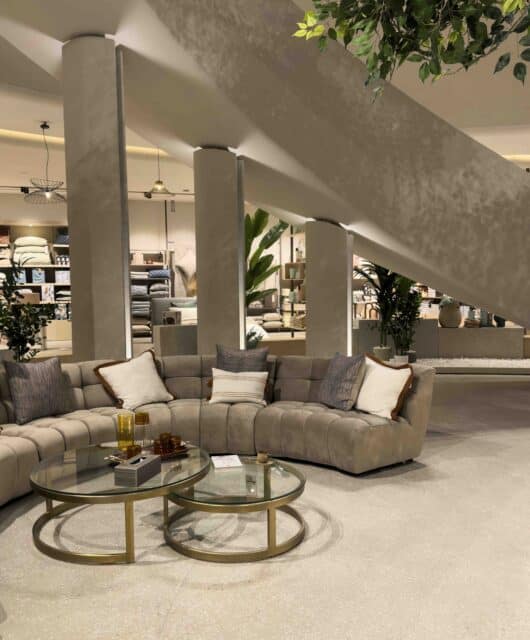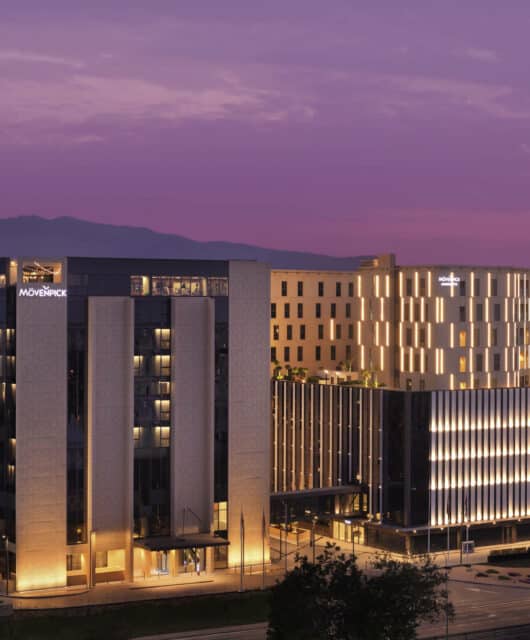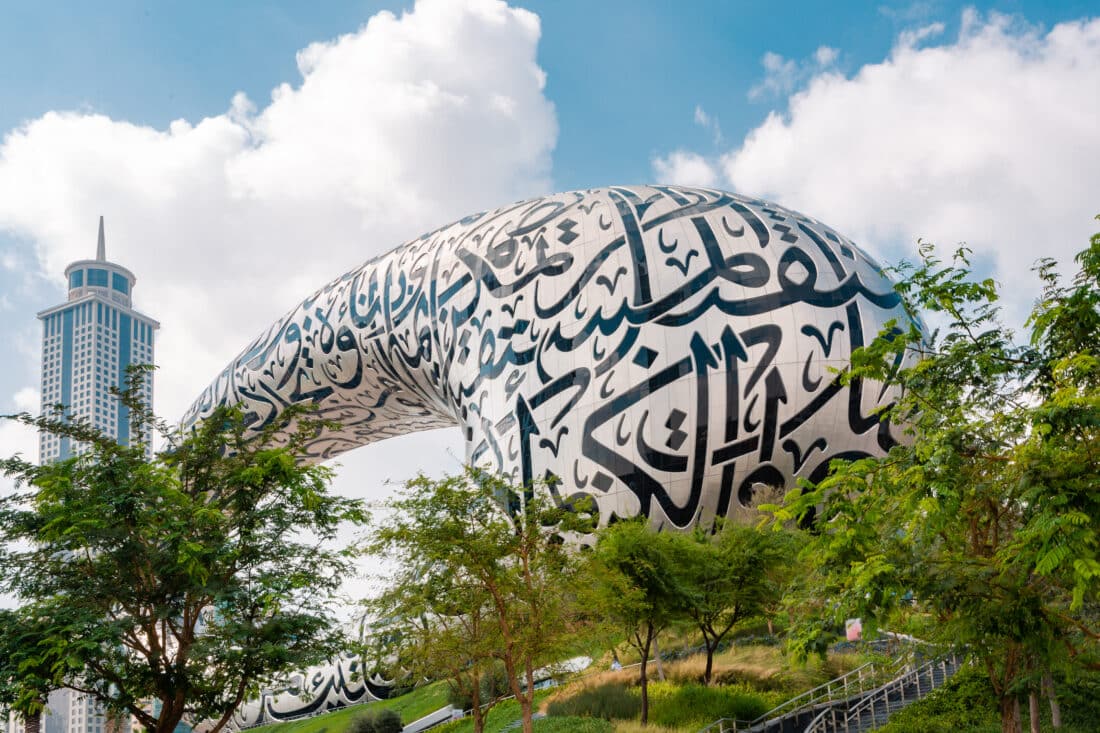 With its cutting-edge and futuristic design, the Museum of the Future has captivated the world’s attention since its inception. It has established a reputation as a centre for intellectual debate, a lighthouse for innovators, and a driver of change.While many people are familiar with the design of this architectural marvel and its role as a global platform for harnessing the power of foresight, here are some startling and lesser-known facts about this museum that make it truly extraordinary.
With its cutting-edge and futuristic design, the Museum of the Future has captivated the world’s attention since its inception. It has established a reputation as a centre for intellectual debate, a lighthouse for innovators, and a driver of change.While many people are familiar with the design of this architectural marvel and its role as a global platform for harnessing the power of foresight, here are some startling and lesser-known facts about this museum that make it truly extraordinary.
1. A tribute to Tribulus Omanense, the national flower of the UAE
The museum’s Al Waha (The Oasis), depicts a space for wellbeing in 2071, presenting a journey into serenity. Visitors can escape the digital noise, meditate, and rediscover their natural balance in this sensory haven, which depicts digital desert sand ripples.
Located on the third floor, guests entering the space are greeted by the tranquility of Al Waha’s corian fountain, which releases the calming and earthy fragrance inspired by the five-petalled Tribulus Omanense, the national flower of the UAE.
This visually captivating flower’s ability to bloom and thrive in the desert’s challenging and extreme conditions has inspired countless tales of courage, perseverance and hope within Emirati folklore. The flower is also prized for its medicinal properties and ability to support the body’s immune system in achieving balance.
2. Visitors are immersed in recordings of the real-life sights and sounds of the Amazon Rainforest
The sights and sounds greeting guests upon entering the museum’s Heal Institute represent the DNA of the Amazon Rainforest, one of the richest areas of biodiversity on the planet.
The museum’s immersive digital recreation of a real part of the Amazon rainforest in Leticia, Columbia, depicts the ecosystem with unparalleled realism. When creating the exhibit, the museum’s team of scientists, designers and creators captured live wildlife sounds of the Amazon Rainforest such as native birds and bees amongst many other species.
Beyond its captivating realism, this exhibit is a call to action, bridging nature and technology, whilst encouraging visitors to collaborate to ‘heal’ our planet.
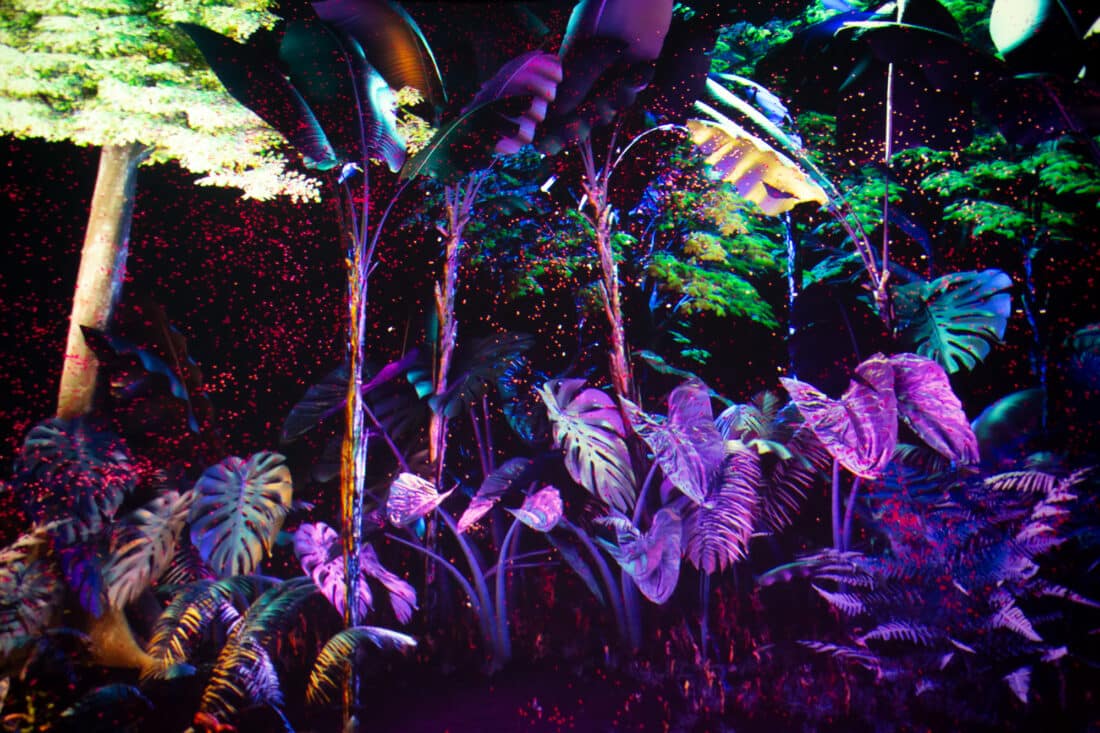 3 A specialised robotic-assisted process brought the building’s exterior to life
3 A specialised robotic-assisted process brought the building’s exterior to life
Celebrated as a global architectural masterpiece, the Museum of the Future goes far beyond conventional design. The steel structure was ‘digitally grown’ by utilising advanced parametric tools which harness the power of computational algorithms, enabling the architects to design a building that defies convention.
The steel exterior consists of 1,024 pieces produced by a specialised robot assisted process; covering a total surface area of 17,600 square meters.
 4. The self-driving car, Audi’s urbansphere concept at “Tomorrow, Today”
4. The self-driving car, Audi’s urbansphere concept at “Tomorrow, Today”
The Museum of the Future is not just a passive observer of the future, it actively contributes to shaping it. The “Tomorrow Today” exhibition which centres around showcasing ‘near future inventions’ features a special exhibit of a ‘zero gravity spacesuit’ that minimizes Earth’s gravitational pull on the body when in space.
The Zero Gravity Space suit is example of the museum’s commitment to showcasing innovative design and cutting-edge technology within its collection of concepts and prototypes.
5. Leadership in energy and environmental design
The museum achieved the Platinum LEED certification for green buildings in 2023, a global ranking that rates ‘healthy, highly efficient and cost-saving sustainable buildings’, making it the only museum in the Middle East to hold this prestigious status.
The building showcases advanced environmental and sustainability methods, efficiently integrating water, insulation and cooling systems, which underscores the museum’s dedication to setting a high standard for green buildings in the region, aligning with global efforts to promote sustainable practices within architectural design and construction.
More than 30% of the museum’s power is solar-generated, with energy-saving LED light bulbs used throughout, whilst the entire surface of the superstructure is made of specially developed glass, manufactured using new technologies to improve thermal isolation.
6. Visitors embark on a simulated journey into space, and experience being ‘launched’ 600km above the Earth
The museum’s space elevator is not just a means of transportation; it is a journey into the future. Designed to bring to life the concept of commercial space travel, it immerses visitors within the excitement of what space exploration might hold.
The rocket journey, which simulates the feeling of being launched almost 600km above Earth, transports visitors to OSS Hope, the museum’s depiction of humanity’s home in space, enabling visitors to understand what life could potentially be like aboard a huge space station in 2071.
7. Three inspiring quotes in Arabic calligraphy on the façade were 3D mapped onto the building
The museum’s facade, adorned with intricate Arabic calligraphy, displays the quotes of His Highness Sheikh Mohammed Bin Rashid Al Maktoum rendered in the calligraphy of Emirati artist Mattar Bin Lahej.
The quotes including, “We won’t live for hundreds of years, but the products of our creativity can leave a legacy long after we are gone” pay homage to the Arab world’s golden age of science, mathematics, and geography. Together they highlight the central role the Arab world continues to play in shaping and guiding these disciplines.
Each piece of Arabic script was carefully placed using 3D mapping to adhere to the rules of calligraphy, whilst enabling natural light to flood into the building.
8. The green area around the Museum of the Future is ‘self-watered’ using a cutting-edge irrigation system
The Museum of the Future features a resplendent mound which is home to a wide range of species of trees and plants, offering visitors a glimpse into the natural diversity and ecological heritage of the UAE.
Situated on a large green plinth, the gardens incorporate native Ghaf, Sidr, Palm, and Acacia trees that thrive in the local environmental conditions. The innovative landscaping addresses the challenges posed by extreme summer temperatures, utilising a smart irrigation system for targeted, efficient watering.
This sustainable approach not only ensures the well-being of the diverse plant life but also supports bee and bird populations, creating a harmonious ecosystem within the museum’s surroundings.
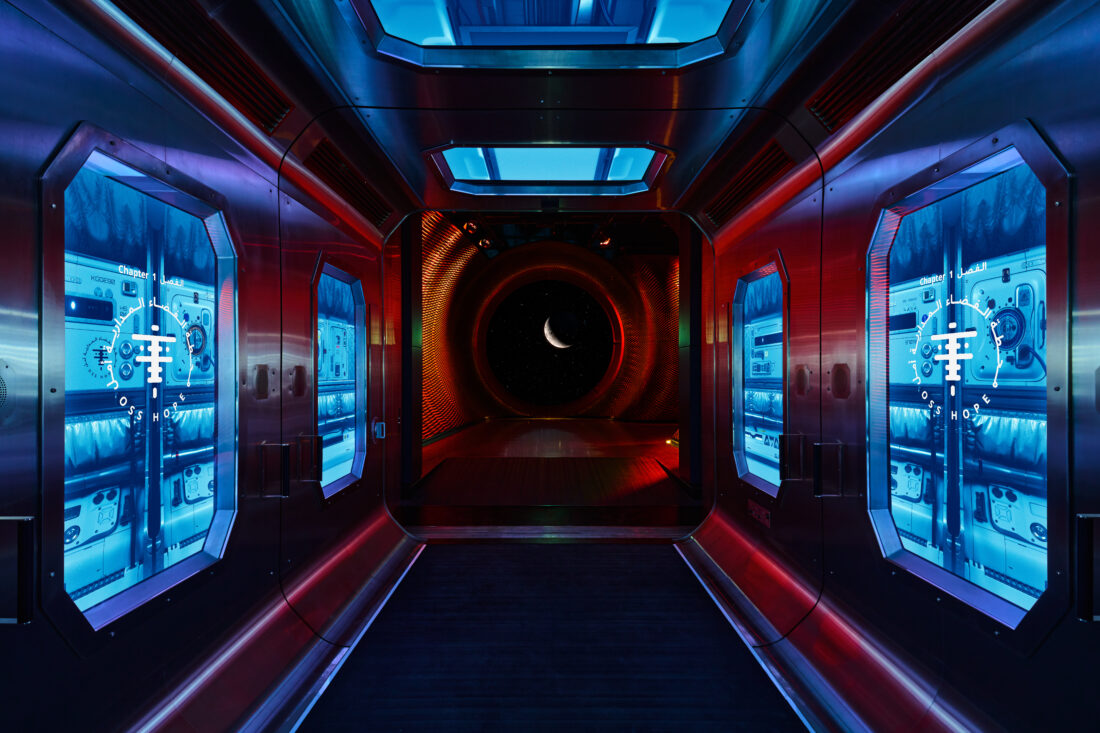 9. The OSS Hope Simulator demonstrates how solar energy from space can power Earth by 2071 in a unique ‘gaming’ style format
9. The OSS Hope Simulator demonstrates how solar energy from space can power Earth by 2071 in a unique ‘gaming’ style format
The OSS Hope Simulator, developed by the museum’s partner SAP is situated in the heart of the ‘Tomorrow Today’ floor and presents visitors with various scenarios that will have an impact on the Orbital Space Station (OSS) Hope, a space structure redirecting solar energy to power Earth by 2071, as conceptualized by the museum.
Guided by an AI assistant, visitors encounter a series of gaming style challenges and have the opportunity to utilise innovative technologies and solutions to reduce emissions, waste, and inequalities to zero with the aim of making OSS Hope an even more sustainable vision.
10. The Void in the structure represents unexplored realms of knowledge
The concept of the ‘void’ within the Museum of the Future symbolises unexplored realms of knowledge, emphasising that those who embark on the journey to uncover the unknown will drive innovation and discovery.
The viewing deck allows visitors to experience the view from the ‘void’ with a clear outlook of the half curve of the museum in addition to the city views.
This symbolic representation of the ‘void’ underscores the endless possibilities and uncharted territories awaiting exploration and signifies the individuals dedicated to pushing boundaries and seeking the unknown who play a pivotal role in fostering innovation and discovery.
This commitment to exploration serves as a catalyst, guiding humanity towards a brighter future and contributing to the ongoing replenishment of the Museum of the Future.


